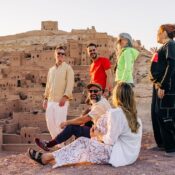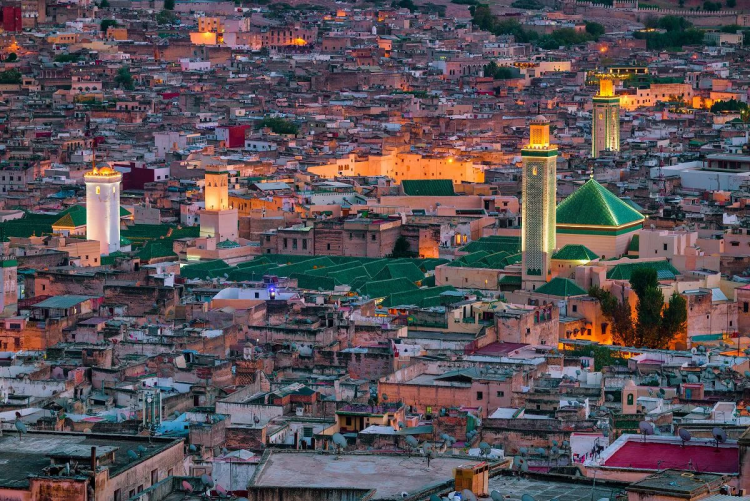
Unveiling Meknés: Morocco’s hidden jewel you need to explore
Welcome to Meknés, a mesmerizing city in the heart of Morocco, rich with untold stories and breathtaking landscapes. Unlike its more popular neighbors, Meknés offers a serene escape into a world where history and culture converge in the most enchanting ways. This city, once the capital of Morocco, serves as a living museum, showcasing the country’s diverse heritage and architectural marvels. As we delve into the essence of Meknés, prepare to be captivated by its unique charm, making it a must-visit destination for those in search of authenticity and inspiration.
Introduction to Meknés: a brief history
Meknés, with its illustrious past, is a city that whispers tales of yore to those who wander its ancient streets. Established in the 11th century and reaching its zenith under the rule of the formidable Sultan Moulay Ismail in the 17th century, Meknés was conceived with grandeur and opulence in mind. The sultan’s ambitious projects left an indelible mark on the city, transforming it into a spectacular capital adorned with impressive fortifications, palaces, and mosques. Now recognized as a UNESCO World Heritage site, Meknés invites travelers to step back in time and explore its rich history, preserved through centuries of tumult and triumph.
The majestic gates of Meknés
Bab Mansour: the gateway to history
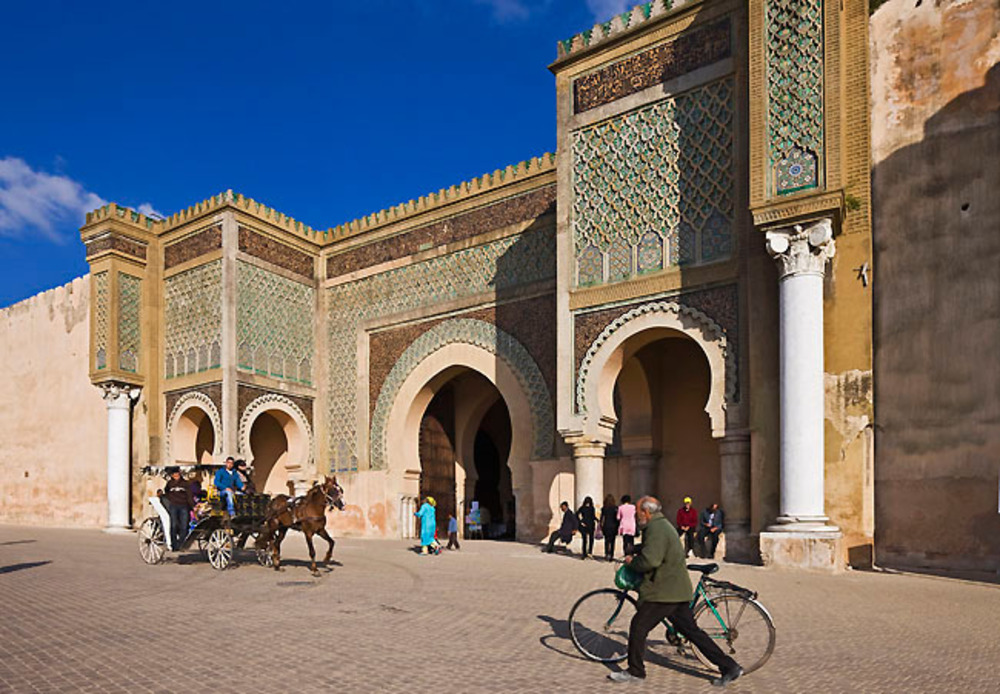
Bab Mansour, the jewel in Meknés’ crown, stands as a testament to Islamic art and architecture’s splendor. This monumental gate, named after its architect, El-Mansour, is adorned with intricate tilework and calligraphy, commanding awe and admiration from all who stand before it. Beyond its aesthetic allure, Bab Mansour serves as a historical beacon, marking the entrance to the old imperial city. It embodies the city’s storied past and cultural richness, making it an essential landmark for any visitor to Meknés.
Bab el-Khemis: a portal to the past
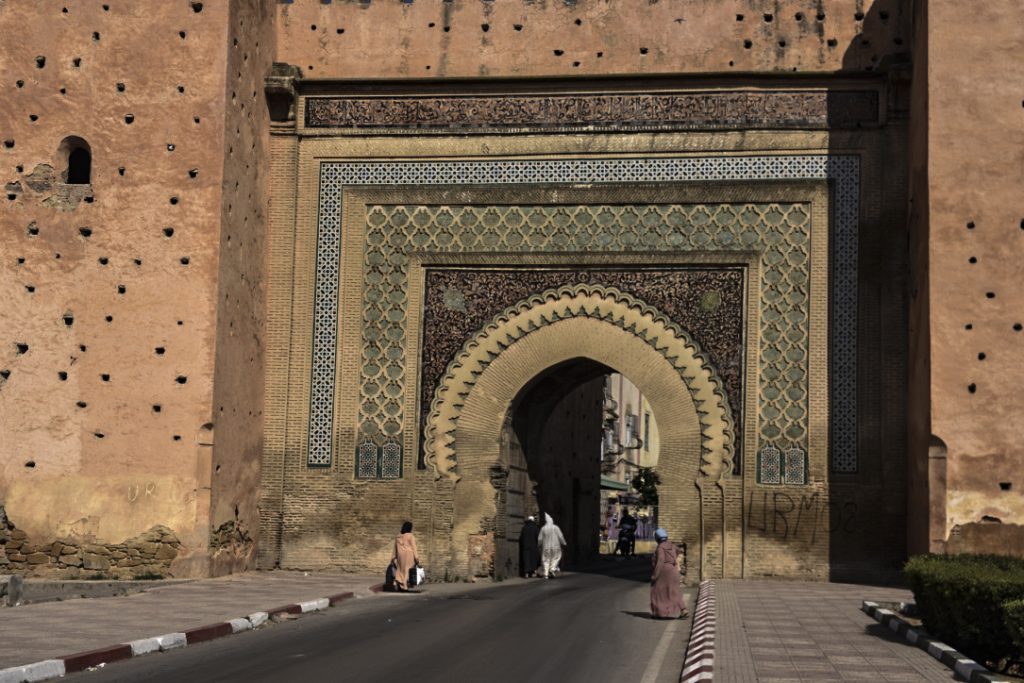
Bab el-Khemis, a gate steeped in history and local lore, serves as a threshold to the bustling markets and vibrant life of Meknés. Named for the weekly market held every Thursday, this gate has witnessed the ebb and flow of daily Moroccan life for centuries. Entering through Bab el-Khemis is like stepping into a living tapestry of colors, sounds, and smells, where traditional Moroccan crafts and goods spill from the souks, offering a glimpse into the heart of Meknés’ culture and commerce.
The heart of Meknés: Moulay Ismail’s Mausoleum
The Mausoleum of Moulay Ismail, an emblem of spiritual and architectural magnificence, offers a serene retreat from the city’s hustle and bustle. This sacred site, open to all, captivates visitors with its harmonious blend of marble, wood, and stucco work. The mausoleum not only serves as the final resting place of one of Morocco’s most legendary sultans but also as a symbol of the city’s historical and cultural significance. Its tranquil gardens and reflective pools invite contemplation, making it a profound experience for those who visit.
The royal stables and granaries: An architectural wonder
The Royal Stables and Granaries, envisioned by Sultan Moulay Ismail to showcase his wealth and power, stand as a monumental testament to Moroccan ingenuity. The granaries, vast enough to store provisions for years, and the stables, designed to house thousands of horses, reflect the sultan’s ambitions and the architectural brilliance of his era. Today, these structures offer a fascinating insight into the logistical and architectural feats of ancient Morocco, highlighting the sophistication and foresight of its rulers.
Volubilis: a glimpse into Roman Morocco
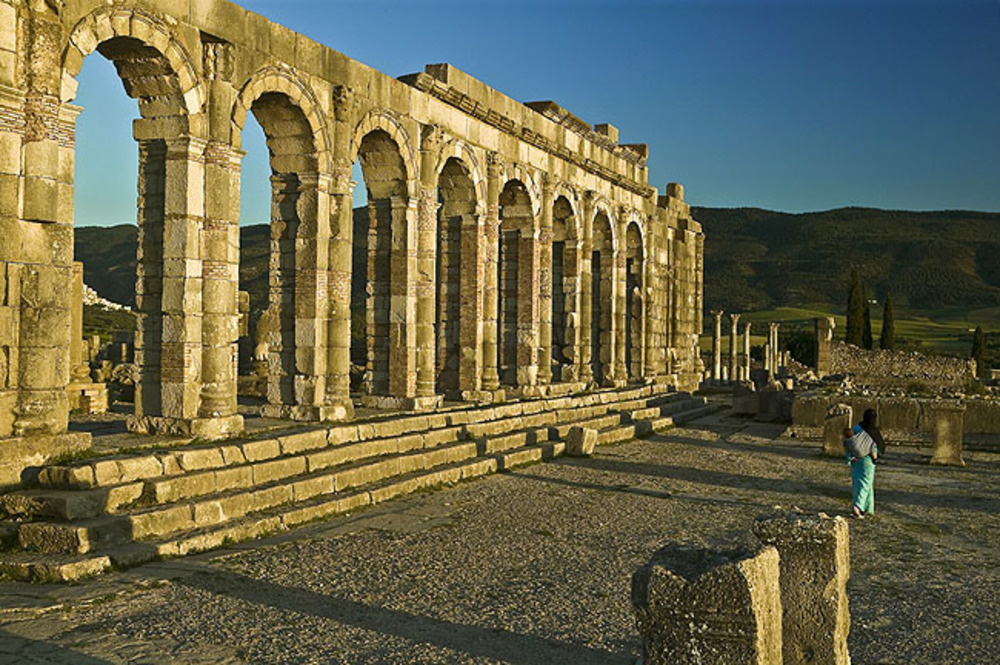
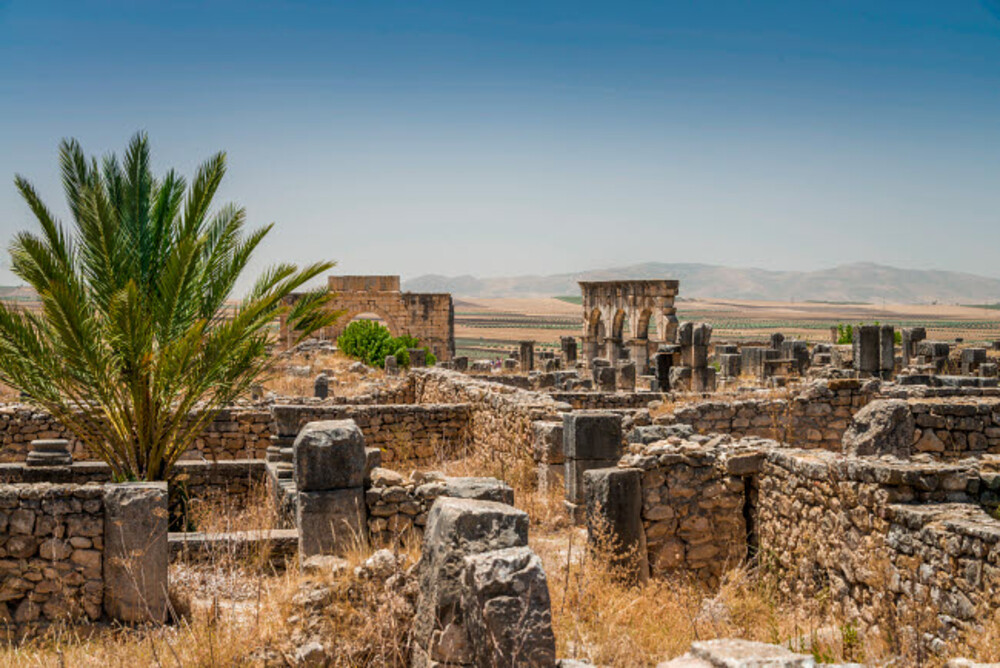

A stone’s throw from Meknés lies Volubilis, a captivating Roman ruin that tells the story of Morocco’s ancient past. This archaeological wonder, with its majestic columns and intricate mosaics, offers a rare window into Roman life in North Africa. As you wander through the ruins, the triumphal arches and basilicas speak of a time when Morocco was a far-flung outpost of the Roman Empire. Volubilis is not just a site of historical interest; it is a bridge connecting the past and present, inviting visitors to ponder the layers of history that have shaped Morocco.
The lively Medinas of Meknés
Exploring the old Medina
The Old Medina of Meknés is a labyrinth of history, where every alleyway and market stall tells a story. This bustling heart of the city is where traditional Moroccan life plays out, amidst the backdrop of historic buildings and the vibrant cacophony of market life. Here, artisans craft goods as their ancestors did, and vendors sell spices, textiles, and pottery, offering a sensory feast for visitors. The Old Medina is not just a place to shop; it’s an immersive cultural experience, offering a glimpse into the soul of Meknés.
The new Medina: a blend of tradition and modernity
In contrast to the ancient charm of the Old Medina, the New Medina of Meknés represents the city’s evolution and adaptation over time. This part of the city, while rooted in tradition, reflects the modern aspirations and daily lives of its residents. Here, the past and present merge, creating a vibrant community that honors its heritage while embracing the future. The New Medina offers a unique perspective on Moroccan urban life, where the echoes of history blend with the rhythm of contemporary life.
Culinary delights of Meknés
The culinary landscape of Meknés is a testament to the richness of Moroccan cuisine, known for its bold flavors and diverse influences. Local dishes, like the hearty Bissara and the aromatic Harira, offer a taste of Morocco’s culinary heritage. The city’s eateries and street food stalls are a paradise for food enthusiasts, serving everything from succulent tagines to sweet pastries infused with local spices. Dining in Meknés is not just about the food; it’s an exploration of the city’s cultural and historical layers, served one bite at a time.
Uncovering the art and culture of Meknés
Meknés is a city that wears its art and culture on its sleeve. From the intricate designs of its mosques and palaces to the vibrant displays in its museums and galleries, the city is a canvas for Moroccan artistic expression. The Dar Jamai Museum, in particular, offers a window into the traditional crafts of Morocco, showcasing the country’s rich textile, ceramic, and jewelry traditions. Cultural festivals and events throughout the year celebrate the city’s heritage, inviting visitors and locals alike to partake in the festivities and immerse themselves in the artistic soul of Meknés.
The green spaces of Meknés
Among the historic sites and urban energy of Meknés lie tranquil green spaces that offer a respite for the soul. The Agdal Basin, with its expansive water reservoir and surrounding gardens, is a perfect example of the city’s natural beauty. These gardens, once the leisure spots for sultans and their courts, now serve as public oases where locals and visitors can enjoy the serene beauty of nature. Whether for a leisurely stroll or a quiet moment of reflection, the green spaces of Meknés provide a peaceful counterpoint to the vibrant life of the city.
Conclusion: why Meknés should be your next destination
Meknés, Morocco’s hidden jewel, is a city that offers an unparalleled blend of history, culture, and beauty. Its unique charm lies in its ability to provide an authentic Moroccan experience, away from the well-trodden tourist paths. Whether you’re drawn to the allure of ancient ruins, the vibrancy of traditional markets, the richness of Moroccan cuisine, or the serenity of lush gardens, Meknés has something to enchant every visitor. As you leave the city, you carry with you not just memories of a place, but a deeper understanding of Morocco’s heritage and the timeless beauty that is Meknés. This hidden jewel awaits your discovery, promising experiences and insights that will enrich your travels and linger in your heart long after you’ve returned home.
FAQs
What is Meknés known for?
Meknés is known for its rich history as one of Morocco’s four imperial cities, its stunning Islamic architecture, including the grand Bab Mansour gate, and its role as a cultural and historical center with a UNESCO World Heritage site designation.
2. Can you visit the Mausoleum of Moulay Ismail if you’re not Muslim?
Yes, the Mausoleum of Moulay Ismail is one of the few sacred sites in Morocco that is open to non-Muslim visitors, allowing them to appreciate its architectural beauty and significance.
3. What are some must-see attractions in Meknés?
Must-see attractions in Meknés include Bab Mansour, the Mausoleum of Moulay Ismail, the Royal Stables and Granaries, the old Medina, and the nearby ancient Roman ruins of Volubilis.
4. Is Meknés worth visiting compared to other Moroccan cities?
Absolutely. Meknés offers a unique experience with fewer crowds, allowing for a more authentic exploration of Morocco’s imperial history, architecture, and culture, making it a valuable addition to any Moroccan itinerary.
All Categories
- Actividades en Marruecos
- Adventure
- Aventura
- blog
- blog
- Camping salvaje
- City Tours
- country tours
- Desert tours
- Estilo de vida
- Excursiones de un día a Marrakech
- Life Style
- Marrakech Day Trips
- Morocco activities
- Morocoo
- Rutas por el desierto
- Sin categorizar
- viajes por el país
- Visitas por la ciudad
- Wild Camping

